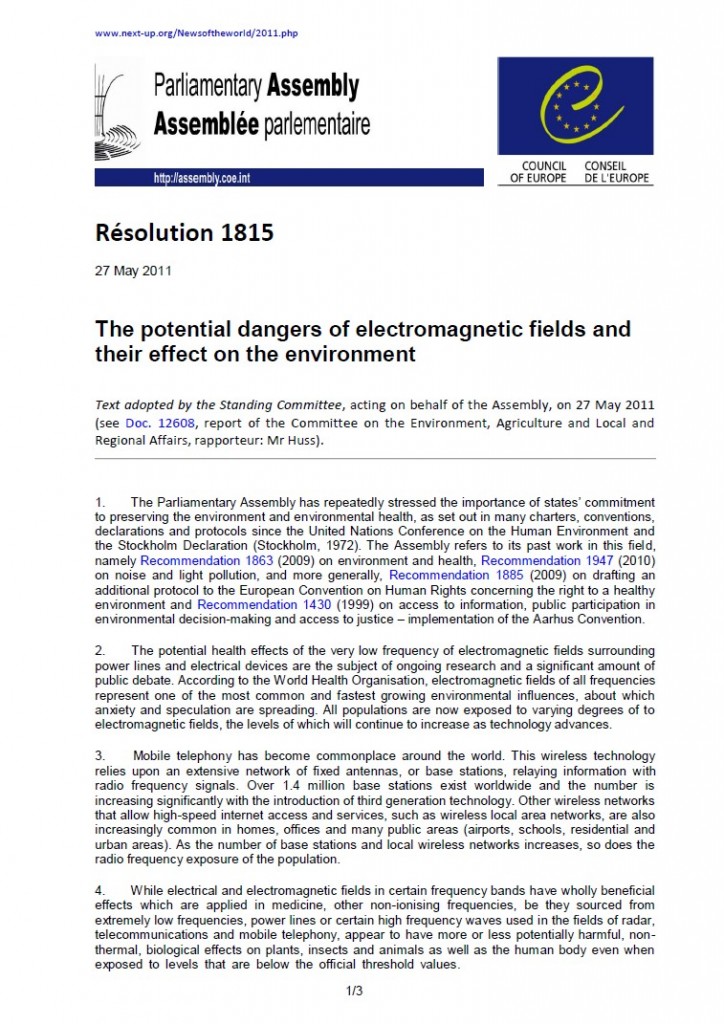Portada del sitio > Declaraciones > Scientific Panel on Electromagnetic Field Health Risks: Consensus Points, (...)
REVIEWS ON ENVIRONMENTAL HEALTH VOLUME 25, No. 4, 2010
Scientific Panel on Electromagnetic Field Health Risks: Consensus Points, Recommendations, and Rationales
Scientific Meeting: Seletun, Norway, November 17-21, 2009
Jueves 3 de febrero de 2011 · 11388 lecturas
Scientific Panel on Electromagnetic Field Health Risks: Consensus Points, Recommendations, and Rationales
Scientific Meeting: Seletun, Norway, November 17-21, 2009
Adamantia Fragopoulou,1 Yuri Grigoriev,2 Olle Johansson,3 Lukas H Margaritis,1
Lloyd Morgan,4 Elihu Richter5 and Cindy Sage6
1University of Athens, Athens, Greece; 2Russian National Committee on Non-Ionizing Radiation
Protection, Moscow (Russian Federation); 3Karolinska Institute and The Royal Institute of Technology, Stockholm, Sweden ; 4Bioelectromagnetics Society, Berkeley, CA, USA; 5Hebrew University-Hadassah School of Medicine, Jerusalem (Israel); 6Sage Associates, Santa Barbara, CA, USA
Summary: In November, 2009, a scientific panel met in Seletun, Norway, for three days of intensive discussion on existing scientific evidence and public health implications of the unprecedented global exposures to artificial electromagnetic fields (EMF). EMF exposures (static to 300 GHz) result from the use of electric power and from wireless telecommunications technologies for voice and data transmission, energy, security, military and radar use in weather and transportation. The Scientific Panel recognizes that the body of evidence on EMF requires a new approach to protection of public health; the growth and development of the fetus, and of children; and argues for strong preventative actions. New, biologically-based public exposure standards are urgently needed to protect public health worldwide.
Ver el artículo completo en pdf y la nota de prensa del Instituto Karolinska en el archivo Word







